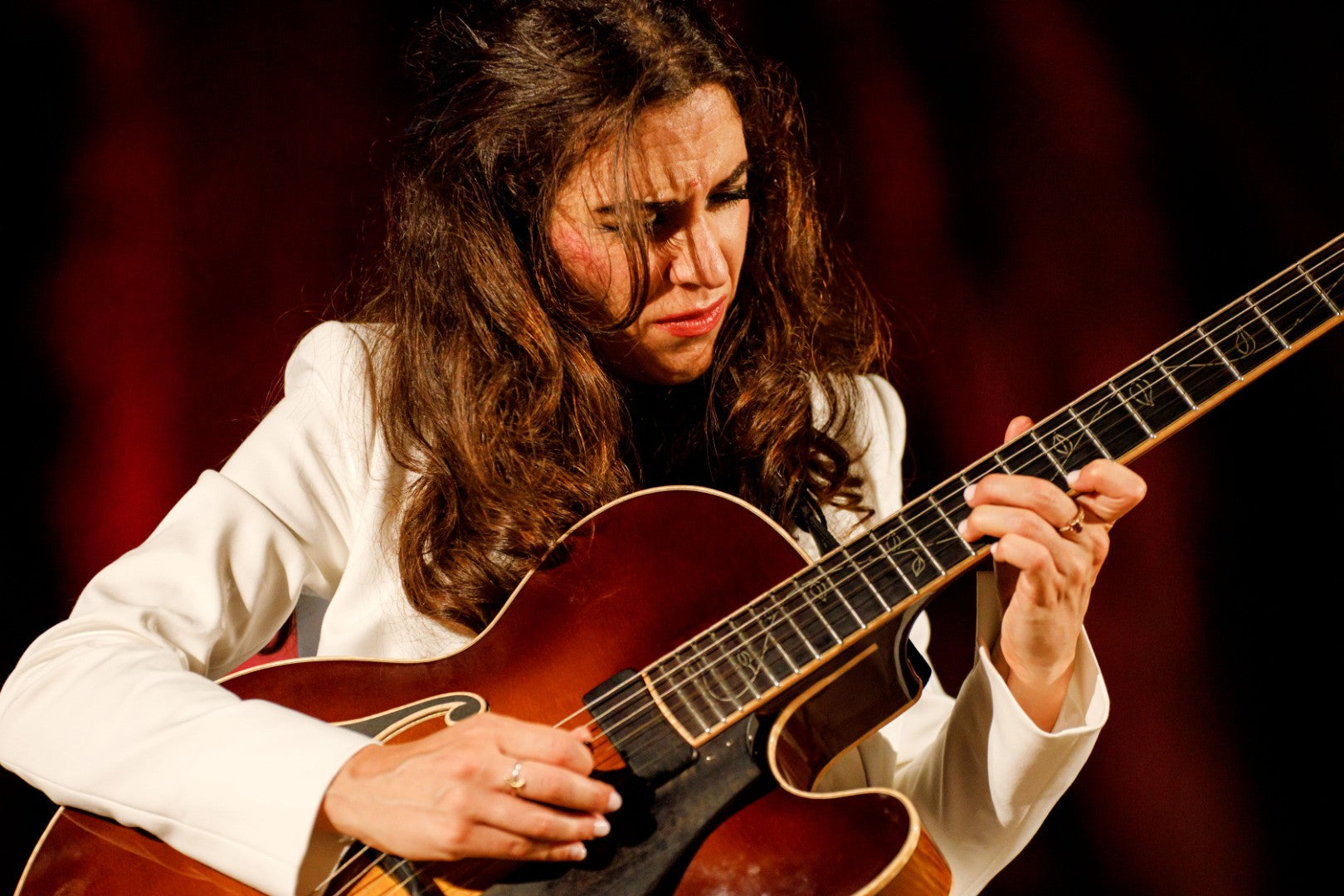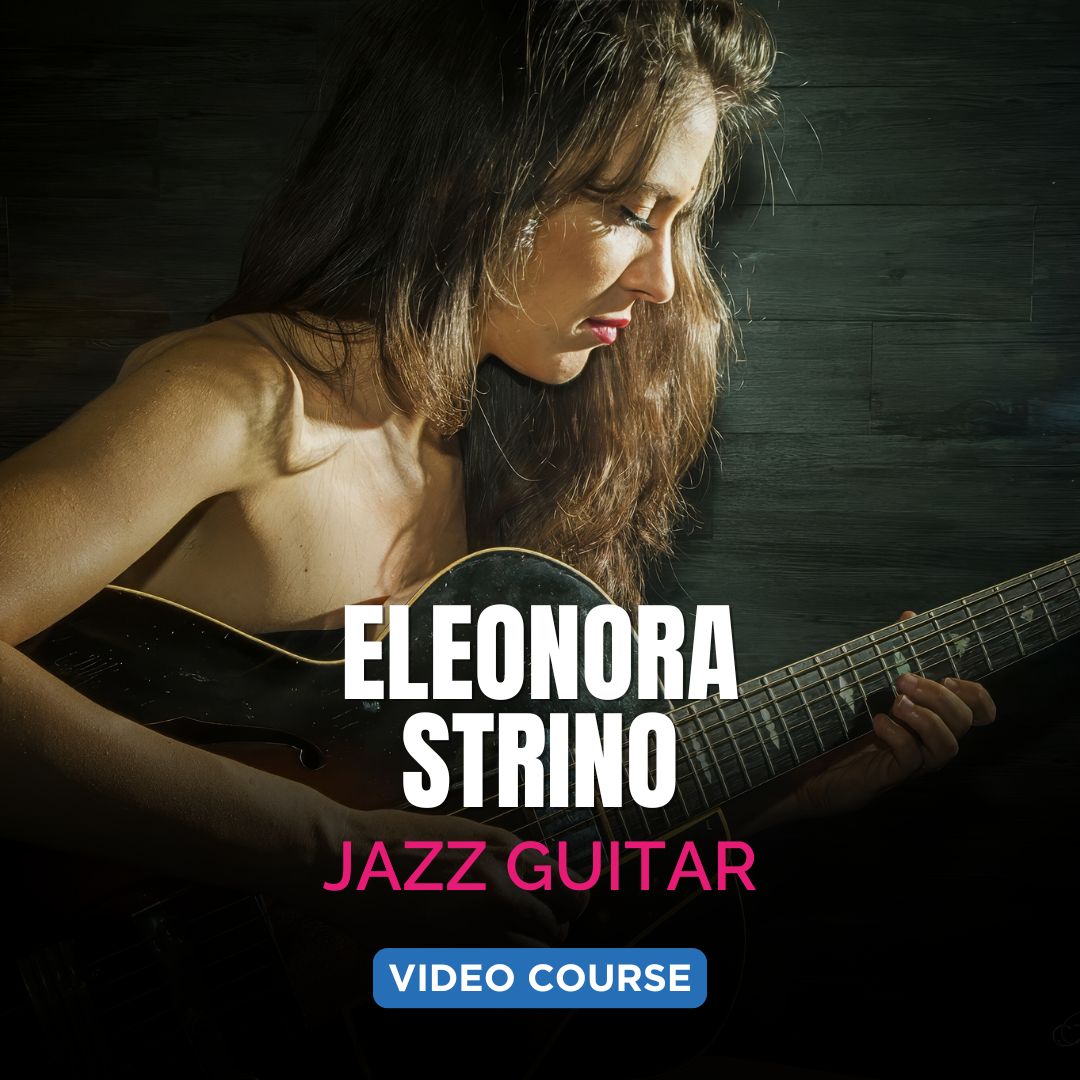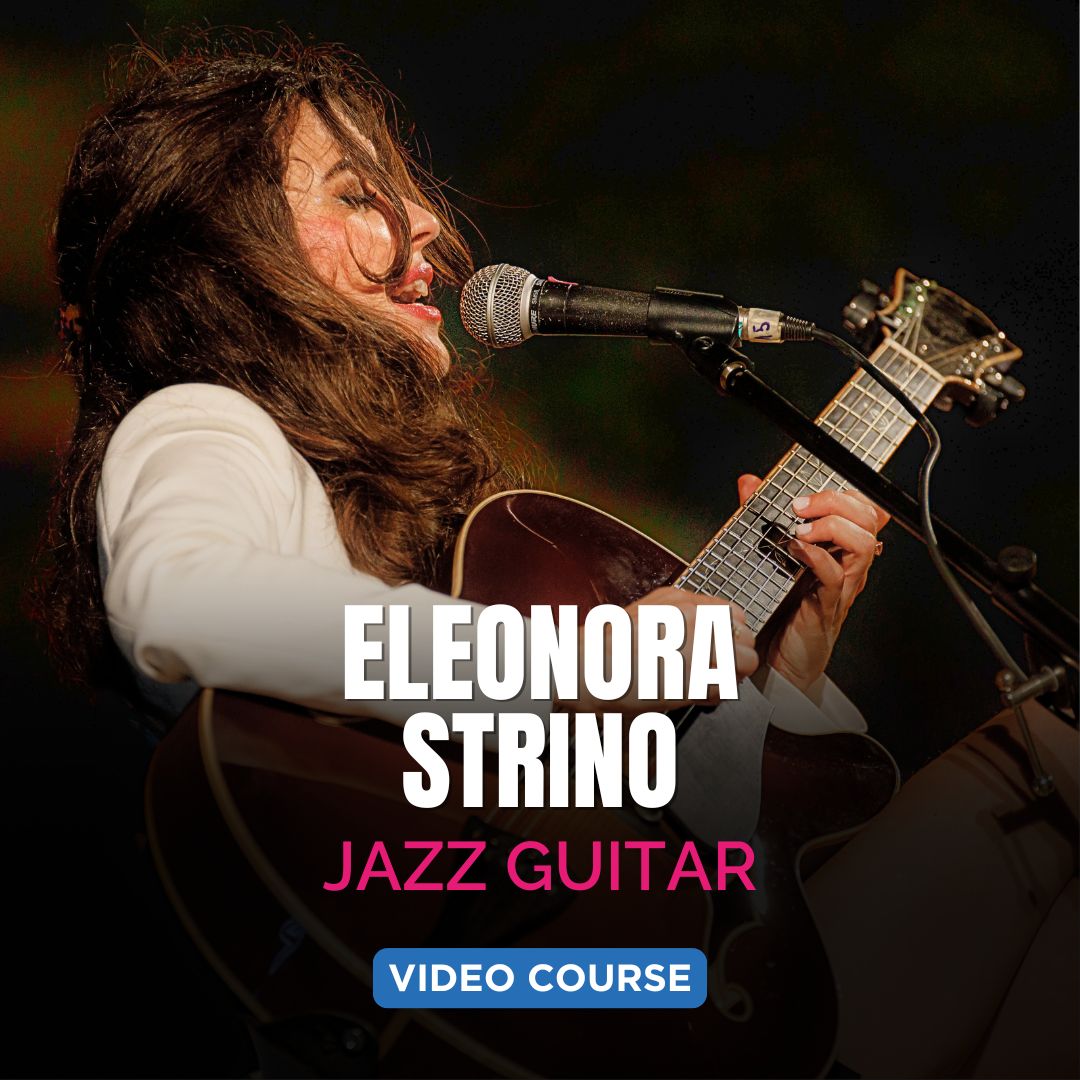THE LANGUAGE OF JAZZ GUITAR
Transform your playing on jazz guitar
with Eleonora Strino
Course with subtitles available in
🇮🇹 🇺🇸

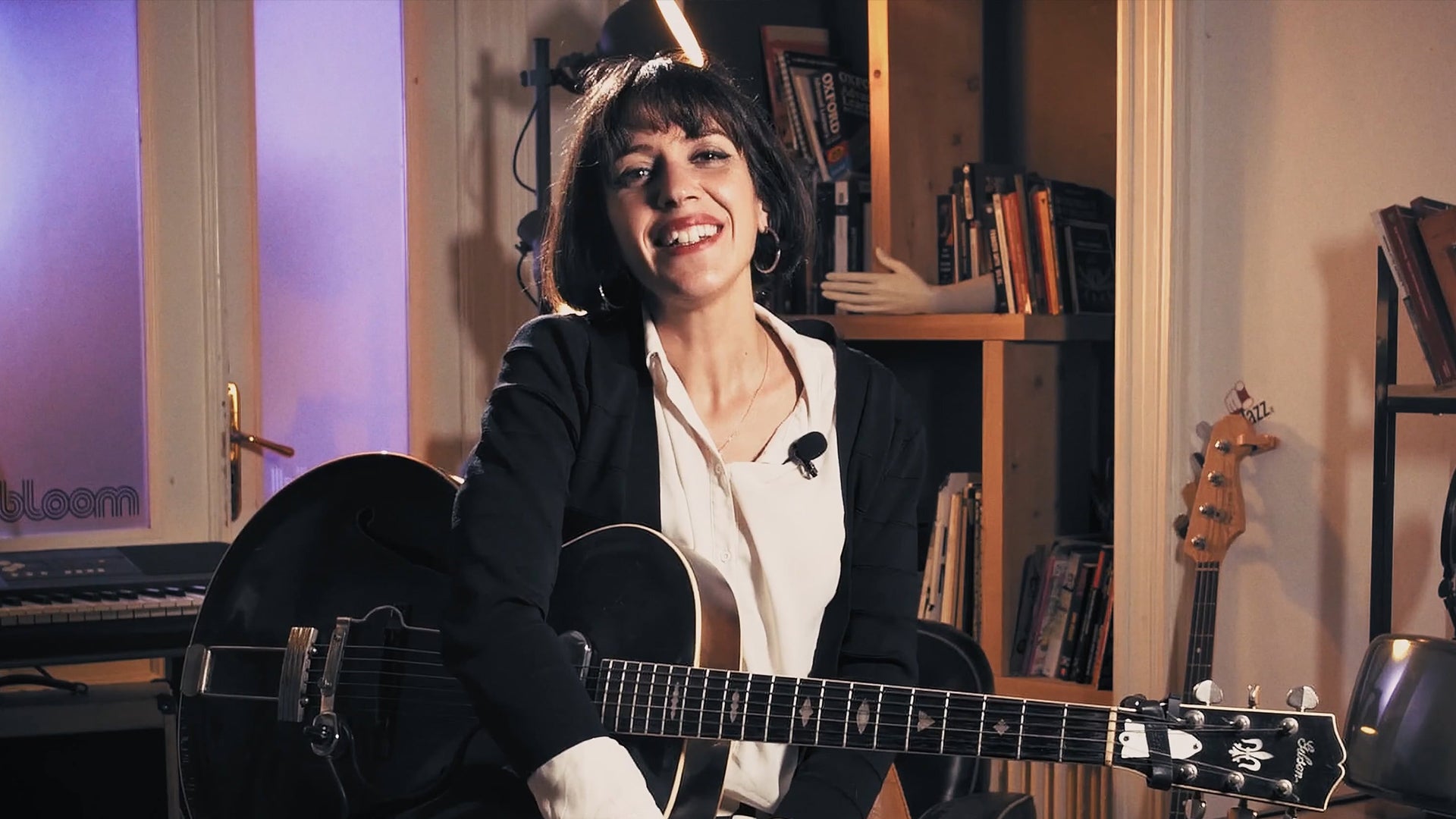
COURSE DETAILS
Eleonora Strino's course is an in-depth journey into the world of jazz guitar , designed for those who already have some basics and want to develop a richer and more aware playing.
The lessons start with the study of bebop scales , showing how the addition of chromaticisms makes the phrasing more natural and coherent, and continue with the analysis of arpeggios and resolutions, essential for hitting the right notes on strong beats.
Ample space is dedicated to harmonization , with drop 2 voicings and the use of sixth and minor sixth chords, which become versatile tools for tackling even complex contexts such as half-diminished chords , altered chords and dominant substitutions.
The most typical passages of the repertoire, such as II-VI , are addressed in detail, both from a melodic and harmonic point of view, with practical exercises that help to integrate the theory directly on the instrument.
There is also a reflection on the guitar solo , understood not only as a guitar technique, but as a musical approach that draws inspiration from pianists, wind instruments and orchestras to enrich one's phrasing and broaden one's expressive possibilities.
The course concludes with a concrete application of all the concepts, leading the student to move naturally between phrasing , voicing and improvisation , to build a more mature and personal playing.
START NOWThe lesson introduces the bebop major scale , explaining how adding an extra note between the fifth and sixth allows the chordal notes to fall on the strong beats, ensuring greater harmonic clarity and melodic coherence in improvisation.
The minor bebop scale is explored, constructed with the minor third and the usual chromaticism between the fifth and sixth. Practice is suggested using the five boxes on the neck, exploring alternative positions for the third, and recommending study in all keys.
The lesson analyzes the Mixolydian bebop scale , highlighting how chromaticism varies depending on the seventh. The main versions are presented, including those with a flat ninth and a flat thirteenth , which can be applied to improvisation to enrich harmonic and melodic possibilities.
A study method based on the cycle of fourths is demonstrated, with exercises on scale fragments. The focus is on combining arpeggios and the bebop scale to develop coherent phrases that can be integrated into improvisational language.
The work on arpeggios and the bebop scale continues, with particular attention to the resolution of sevenths on chords. The chromatic options for making notes fall on the downbeat onto chord tones are explained, constructing typical bebop phrases.
We move on to the harmonic-harmonization perspective of bebop scales, introducing voicings . The harmonization is based on just two chords: major sixth and diminished. We explain how to apply these voicings in drop 2 to make them playable on the guitar.
The lesson addresses the harmonization of the minor bebop scale , focusing on the minor sixth chord and the diminished one. Drop 2 positions and their use on half-diminished chords are illustrated, solving typical accompaniment problems in these contexts.
Major sixth chords and their equivalence with minor seventh voicings are explored, allowing for broad practical application. Study is organized around the cycle of fifths, training the ability to recognize and quickly apply substitutions.
The lesson explores minor sixth chords and their equivalences with other structures, such as half-diminished chords, sevenths with major ninths, and altered chords. It explains how to recognize and use these connections to enrich your accompaniment and improvisation.
Arpeggios built on sixth chords are introduced, developing them over each voicing and inversion. The connection with the piano approach is emphasized, highlighting how these arpeggios can enrich improvisation, accompaniment, and moments of stolen tempo.
The study is extended to minor sixth arpeggios , applied to their respective voicings and inversions. The lesson demonstrates how these arpeggios can also be used on half-diminished notes, seventh-ninth chords , and altered structures, significantly expanding the practical possibilities.
The use of bebop Mixolydian scales on the II-VI is analyzed, offering exercises for playing them at intervals of a minor third. The logic of dominant substitutions and the technical integration of phrases in different keys are demonstrated.
The focus shifts to the II-VI from a harmonic perspective , developing the voicings on D minor and G seventh until the resolution in C. Progressive exercises are proposed with one, two, three, and four voicings per chord.
A reflection on solo guitar is introduced, encouraging students to think of themselves not just as guitarists but as musicians. It suggests drawing inspiration from pianists, wind instruments, and orchestras, broadening their rhythmic and harmonic palette beyond the instrument itself.
In the final lesson, Eleonora concludes with a performance of Stella by Starlight , summarizing the concepts covered: bebop scales, harmonizations, piano approaches, and inspiration from great jazz masters, offering a conclusive overview of the entire journey.
COURSE EXTRACTS
COURSES ON MUSICEZER
95%
User satisfaction level
87%
Course completion level
STRENGTHS
An educational video path in 4K and HD audio , the complete booklet with all the transcriptions of the musical parts analyzed and played by Eleonora Strino.
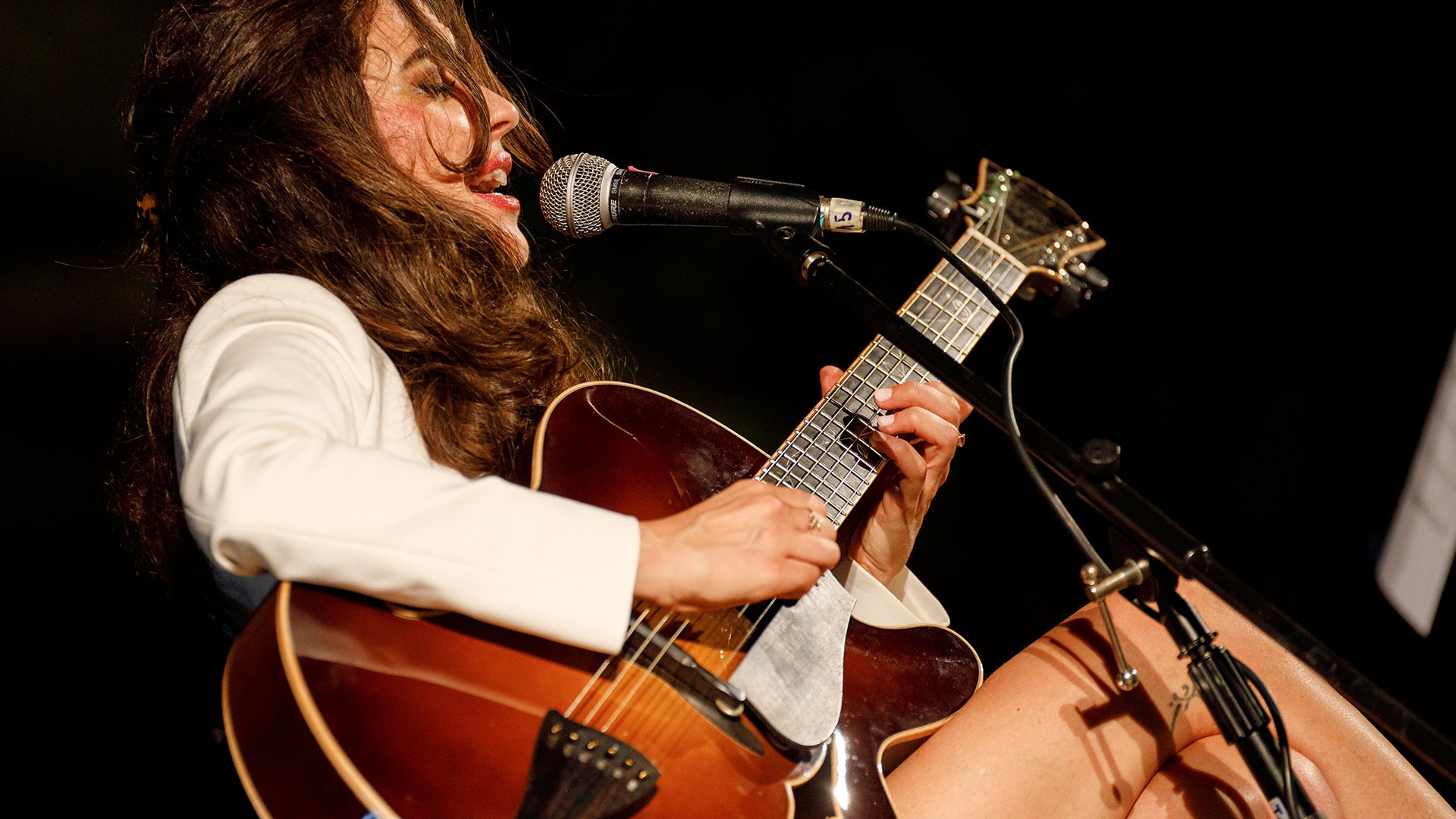
♾️ THE COURSE IS YOURS FOREVER
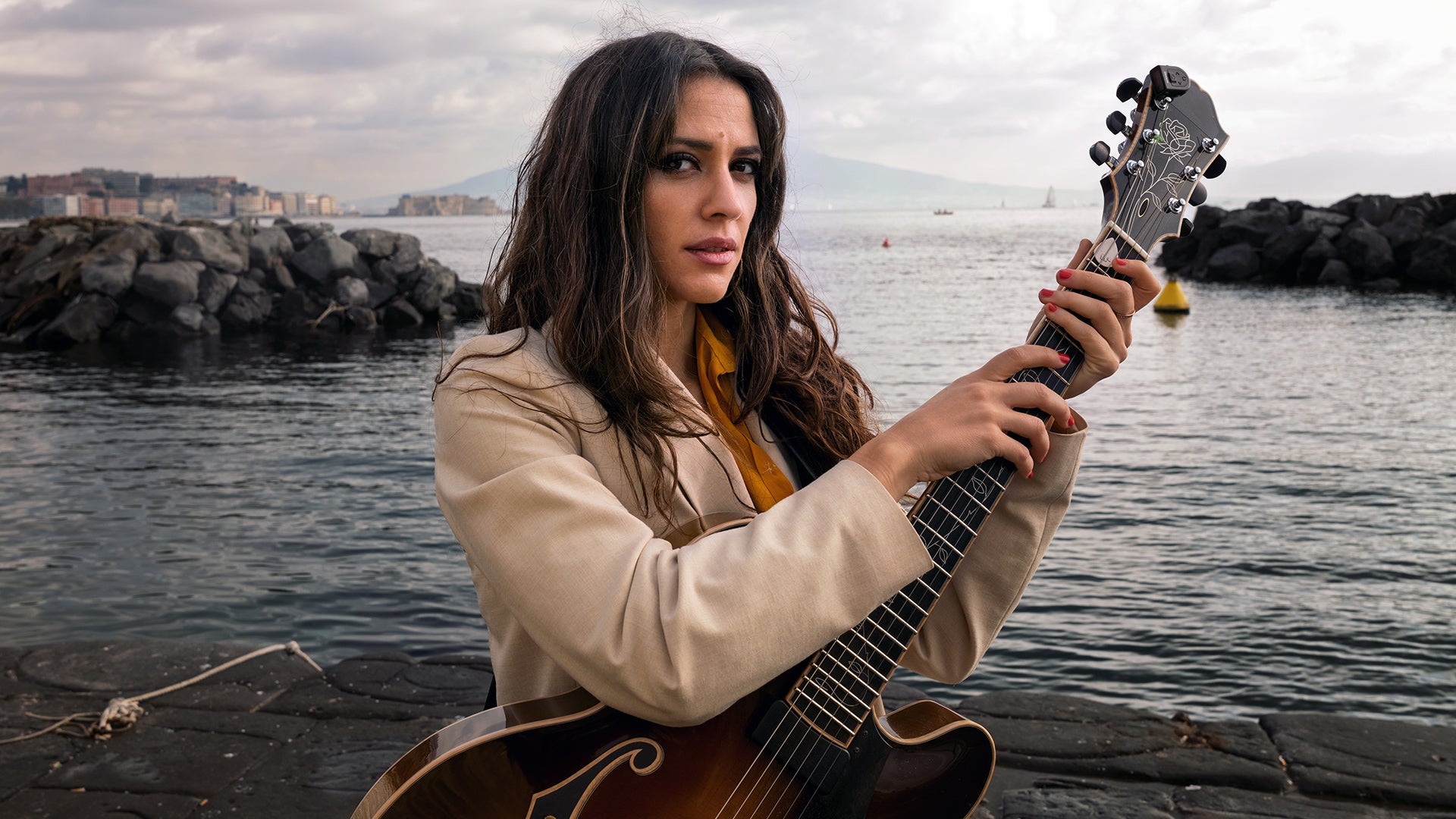
🎧 LIKE IN THE FRONT ROW
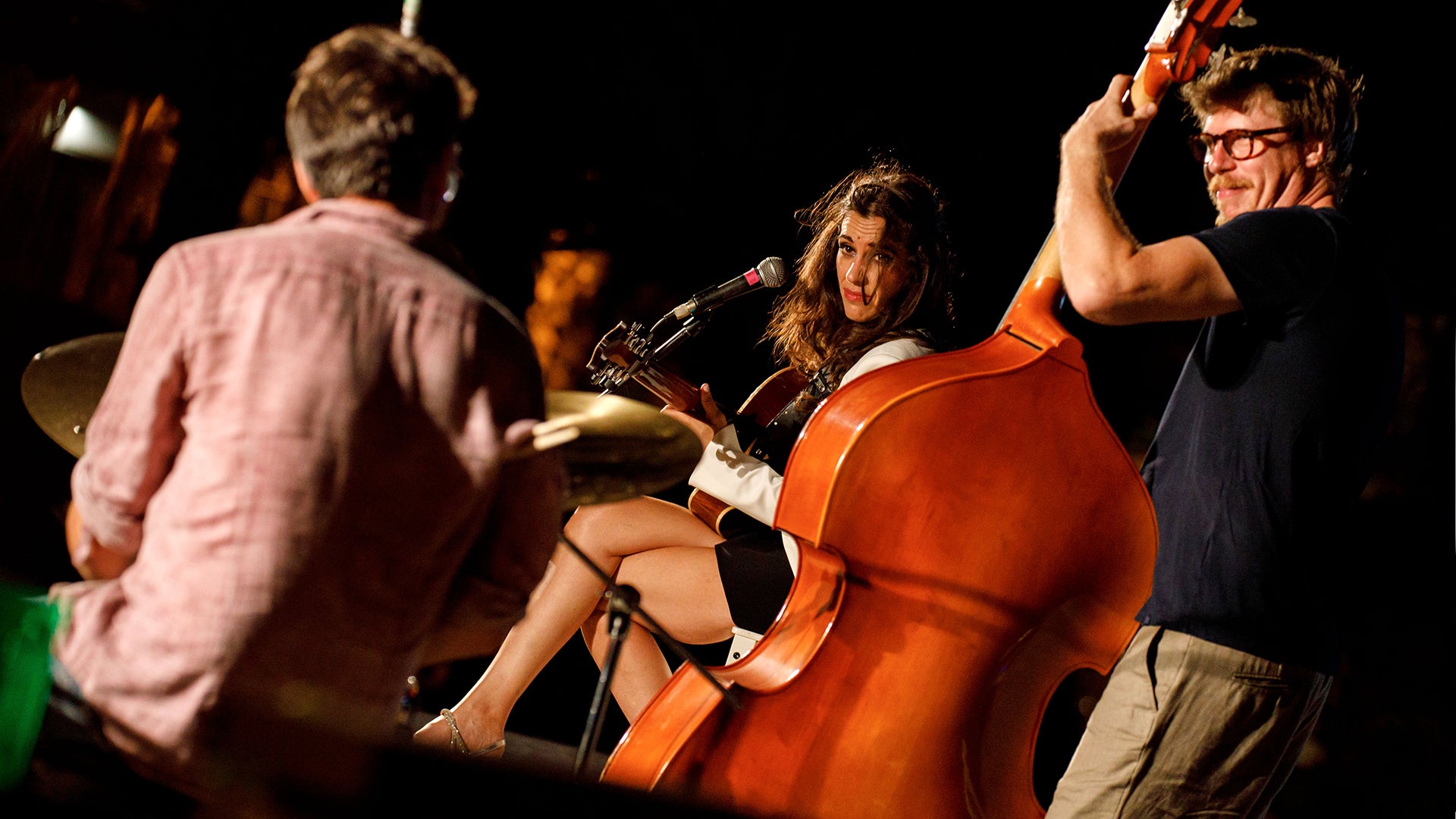
🎓 LEARN FROM THOSE WHO REALLY PLAY
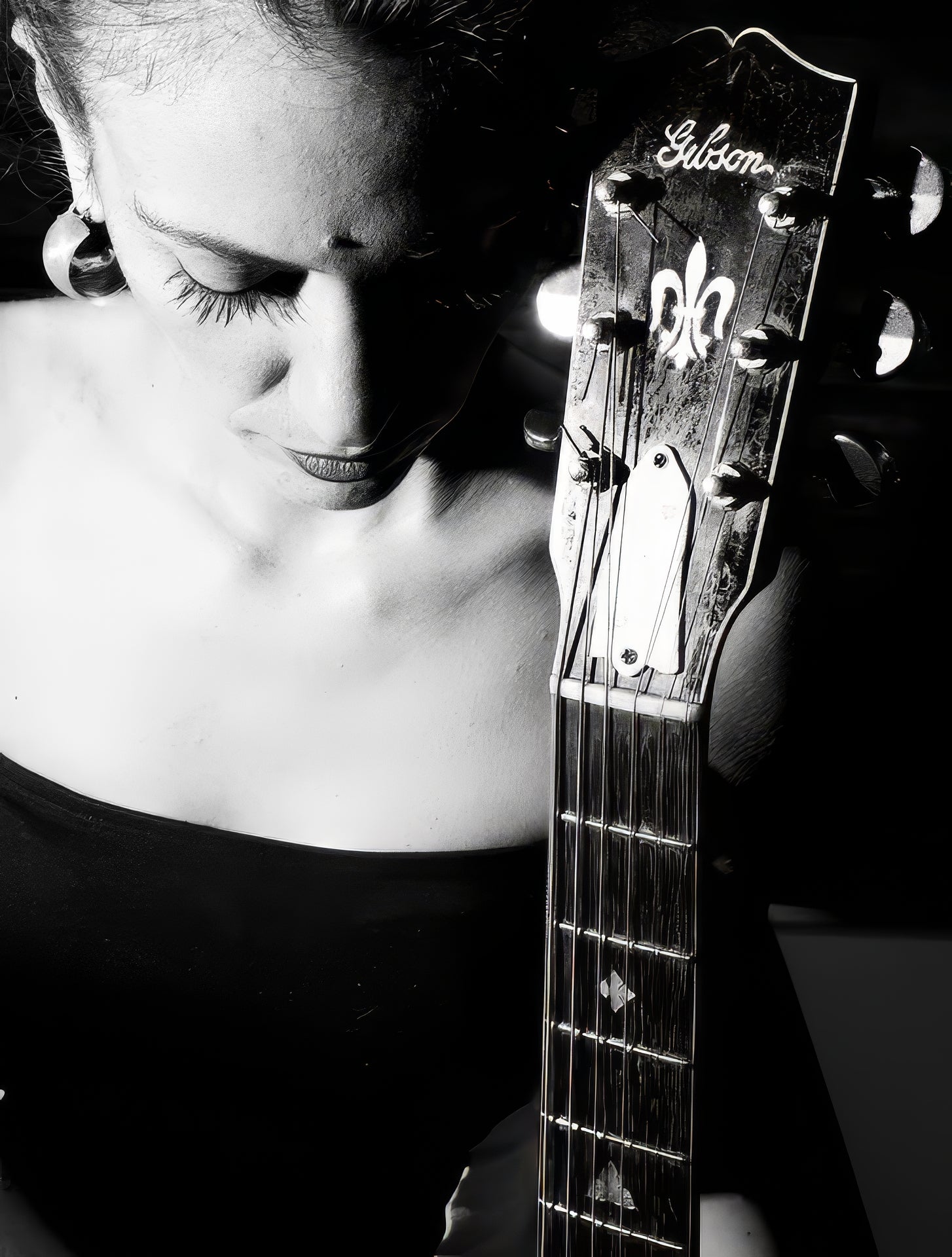
ELEONORA STRINO
Recognized by critics as one of the most interesting talents on the international jazz scene , Eleonora Strino trained between the Conservatories of Naples and Amsterdam, studying with masters such as Pietro Condorelli and Jesse Van Ruller.
Her career began as first guitar in Roberto De Simone's orchestra, but the meeting with Greg Cohen opened the doors to the main European festivals and to a collaboration that also led to the recording of the album Si, Cy .
In the following years he collaborated with Dado Moroni , with whom he recorded Itamela , and took part in important festivals such as Umbria Jazz .
In 2020 she appears on the cover of Jazz Guitar Today , while as a composer she wins the prize for best composition at the international “Johnny Radacanu” competition with the song Senza e Ce Sta' .
In 2021 she joined Emanuele Cisi 's project, published by Warner, and took part in international tours such as International Guitar Night , which took her to the stages of North America.
She then recorded a new album with Joey Baron and Greg Cohen , produced by Cam Jazz. In addition to her concert and teaching activities, she published the manual Be-Bop Scales for the English publisher Fundamental-Changes and worked on her first album as a singer-songwriter.
He has collaborated with artists such as Wayne Escoffery, Ulf Wakenius, Martin Taylor, Seamus Blake and Peter Bernstein , confirming himself as one of the most authoritative and original guitar voices of the new jazz generation.
BUT HOW MUCH DOES IT COST ME?
Accessible to everyone at a fraction of its real value!
